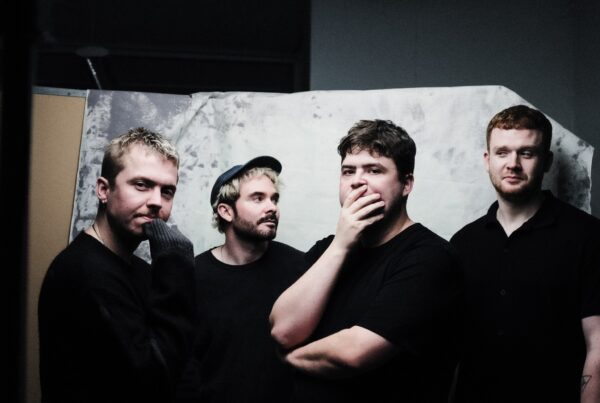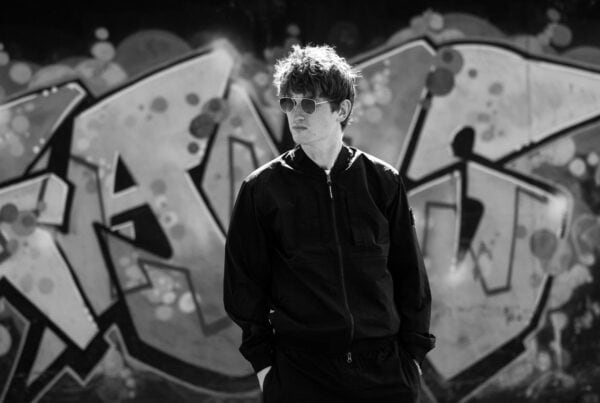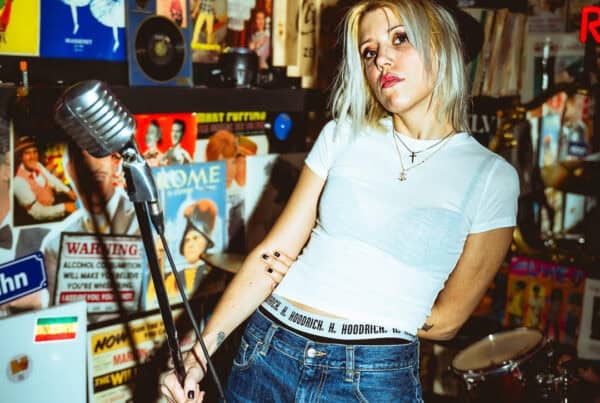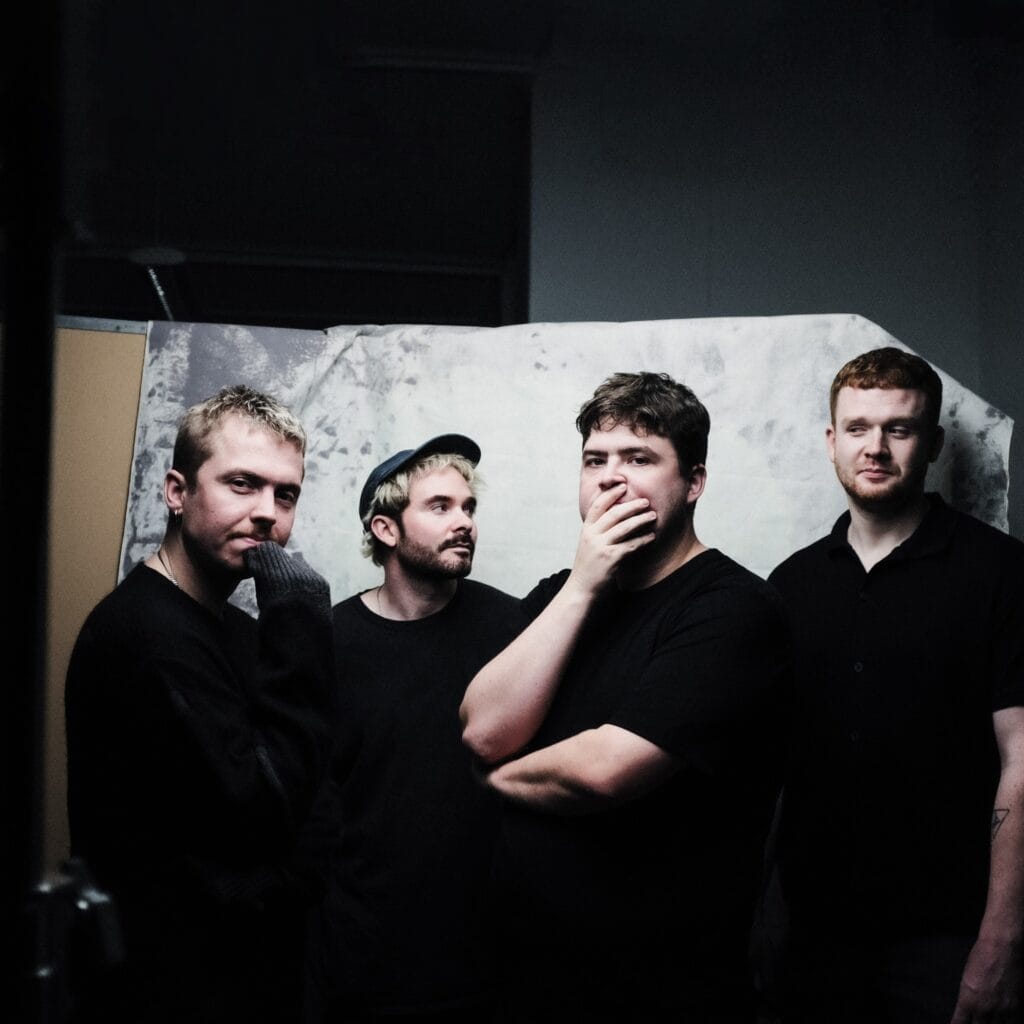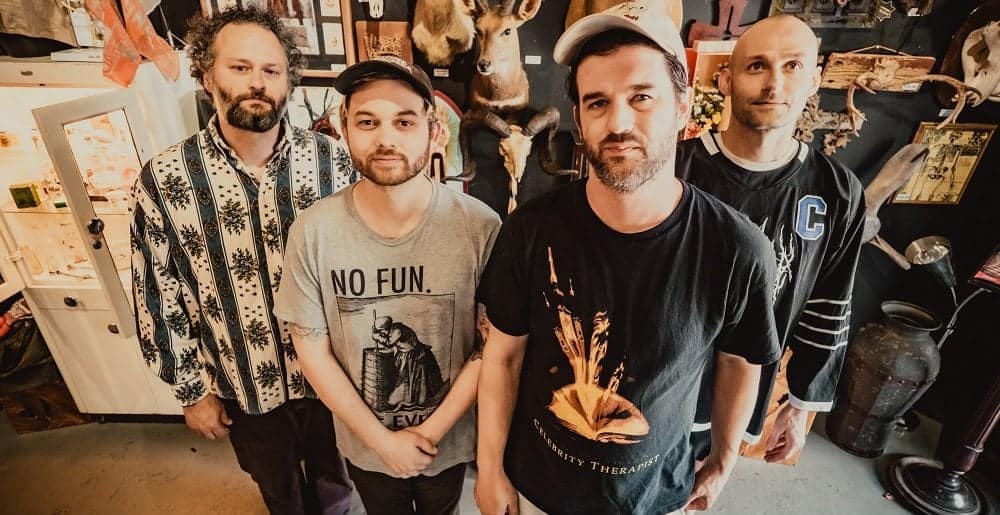Julie Christmas and John LaMacchia sit down with Dom Smith to discuss the new album Ridiculous and Full of Blood, adapting the album to the live sphere and the challenges and excitement of collaboration.
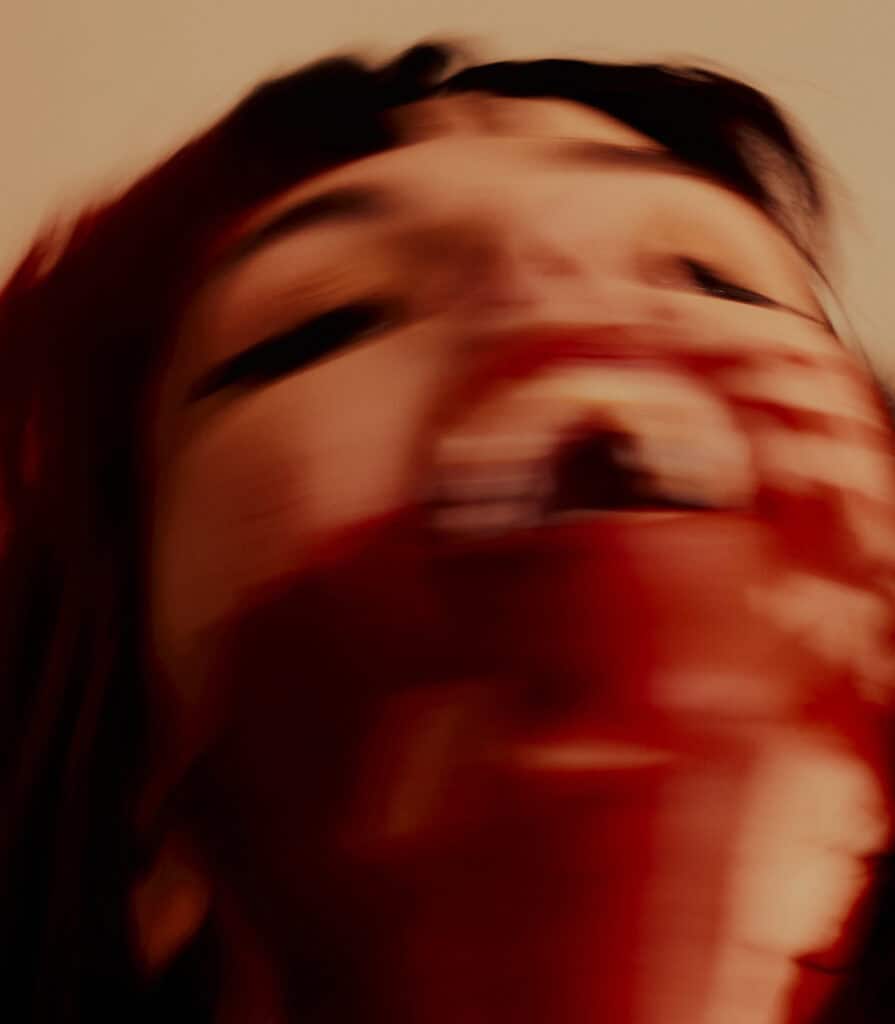
Photo credit: Fred Gervais
Julie Christmas had already mustered an authoritative voice in alternative music by the time she went solo for 2010’s The Bad Wife. Having lent her distinctive voice to the noise rock outfit Made Out Of Babies and the post-metal supergroup Battle of Mice, Christmas returns with her second full-length statement. Ridiculous and Full of Blood is unleashed June 14th on RED CRK.
Christmas is quick to sing the praises of the team she gathered to work on her latest record, encouraging anyone “hungry for excellence” to look toward anything they work on. Guitarist and vocalist Johannes Persson of Cult of Luna. Drummer Chris Enriquez of Spotlights. Producer Andrew Schneider – who has produced for noise rock heavyweights like Unsane and KEN Mode – also takes up bass duty. Keyboardist Tom Tierney. And to round up a formidable who’s-who, Candiria’s John LaMacchia on guitar.
And, of course, at the centre of it all are the instantly recognisable vocals of Julie Christmas herself. It’s a voice that has served as the ever-powerful throughline of all her projects and guest appearances. If you ask Julie herself, it’s a voice that was found amidst a turbulent childhood whilst “Singing in like a big drunk Irish family.”
“My family is very loud and very big and musical people. I’ve got like 16 uncles and every one of them plays an instrument and they’re all the kind of people you don’t want to get into a fight with. There’s a little bit of growing up in that. I grew up in a really fucking crazy house where noise and chaos was frequent. Some of it is childhood trauma.”
Despite her voice’s power, Christmas herself doesn’t consider herself particularly self-assured and admits she doesn’t really “love” performing live. “I don’t think I ever had a tremendous amount of confidence like ‘oh this is something I can do, and when I do this it’s very powerful for other people.’ You just don’t put that together. I still don’t think that that’s necessarily true. It’s just not something you think of when it’s part of you. Early on, a sign that this was something that I could do was first that the feeling that I get inside when I’m doing is unbelievable. That’s why I have difficulty making music, actually, because the feelings involved are way too overwhelming.”
Despite this, her drive to take her music to the stage comes from a connection with her audience. “I’m there for the audience because it’s a level of communication you don’t get in everyday life. I can feel the audience when they’re there, it pushes me. They don’t have microphones, but I can read their faces. In ‘Supernatural’, the chorus is written to try and get the audience to sing along from the first time. When we go and do this song, I’m gonna tell everybody what the lyrics ae in that chorus and hope I get to hear them for one time.”
Christmas has a lot of experience to draw from on this. From the formation of Made Out of Babies in 2004 through its dissolution in 2012 and her various other pursuits, Christmas has had a now two-decade long career in music. When asked what she has learned about herself through her artistic development she laughs “Absolutely nothing!” before clarifying “Firstly, you get better as you get older – hopefully – through experience. In the beginning, especially when I was playing in Made out of Babies, there was not a really big place for vocals, so I feel like there was a combination; I found other artists who influenced me and what I was doing in that band, I found Jesus Lizard and Unsane and I was listening to a lot to that. And also, was just generally pissed off as a person. Anyone who’s in a band starting out can tell you your first shows are empty, and you have to be ready to show everything and people might not like it. There’s a lot of bravery involved but I think it maybe caused me to go too hard at times.
“As time goes on though, you start to realise there are things that are as powerful as your rage feelings, there are other huge feelings, and they deserve space too. I think that’s how I’ve changed over time; I’ve given a little more space to the other things that are also part of being a fucked-up human.”
That latter theme of exploring the full breadth and complexity of human nature is something she credits as being formative to Ridiculous and Full of Blood. She calls herself a “all or nothing kind of person” and that she wanted to explore the fact that “you’re not always happy, you’re not always miserable. It’s an ebb and flow and you get used to change as you get older. I find two conflicting things happening so close to each other is such a big part of being here. You’re terrified and excited. There’s never one thing happening. There’s never one solid state that you can try and get to.”
The media obviously plays a huge role in this, dominating our perceptions of the world and ourselves. Christmas herself reflects on realising our problems are first-world ones as soon as you turn on the news and realising you “should shut the fuck up.” Delving deeper into this, she states: “There’s a lot of emphasis on being happy all the time and there’s a lot of emphasis, on social media, on looking fabulous – it’s just really not how things are. This thing of like “oh everything is so horrible” and “oh I’m so happy” it’s not how it is, there’s a million different things happening all the time. The faster you recognise that is happening, the more comfortable you are with yourself.”
That complexity and rejecting those falsehoods are reflected in the album cover. Despite many of those involved’s objections – going as far as to call it “one of the fights”- Christmas rejected what she calls a ‘classic beauty shot’ in favour of the image which now adorns the record, which she says is “…a little more fucked up. It’s like the record is!”
Christmas worked with photographer Fred Gervais and a makeup team who Julie describes as “the most unassuming, most talented, coolest, quietest most passionate group of people” to interpret inspiration from a noirish poster for the 1983 David Bowie/Catherine Deneuve vampire film The Hunger. The result is a warped image of Christmas smeared with blood, grinning maniacally.
Despite his initial objections, John LaMacchia relents that Christmas’ judgement was for the best. “It was like ‘oh man, you showed me one thing and it was perfect, and this is it now?’ But the more and more I sat with it I thought this is definitely the right decision because it’s just not…typical. It’s not such a typical beauty shot. It’s unique and different.”
Christmas agrees, adding “The more you look at it you start to notice other things. The way he did it is he had his camera and he put a Pyrex, like a baking dish [in front], that’s why my face is stretched out. That’s really the way the photo is because of this glass, this trick he had. I really like the way the smile is too wide. There’s a little bit of a Deliverance vibe.”
As you might have gathered so far, this album – from the music to the visuals – is a deeply collaborative effort. Julie is keen for you to know this, too, emphasising “It’s my name, but it isn’t my band… Everyone kind of has a voice here.” This is especially true when it comes to adapting the music to live show.
Christmas is set to embark on a tour in support of the new record, which includes UK dates and an appearance at Hellfest. Creating the live show, you can imagine, requires a team of highly creative people. “I’ll tell you that for every band you see out there, there’s like half a dozen other people needed for that to happen. They are their own unbelievably talented people that you don’t see. That’s the challenge. Those people are almost as important as who’s in the actual band. The challenge is finding them, making it all work, what are the fifteen of us gonna do?”
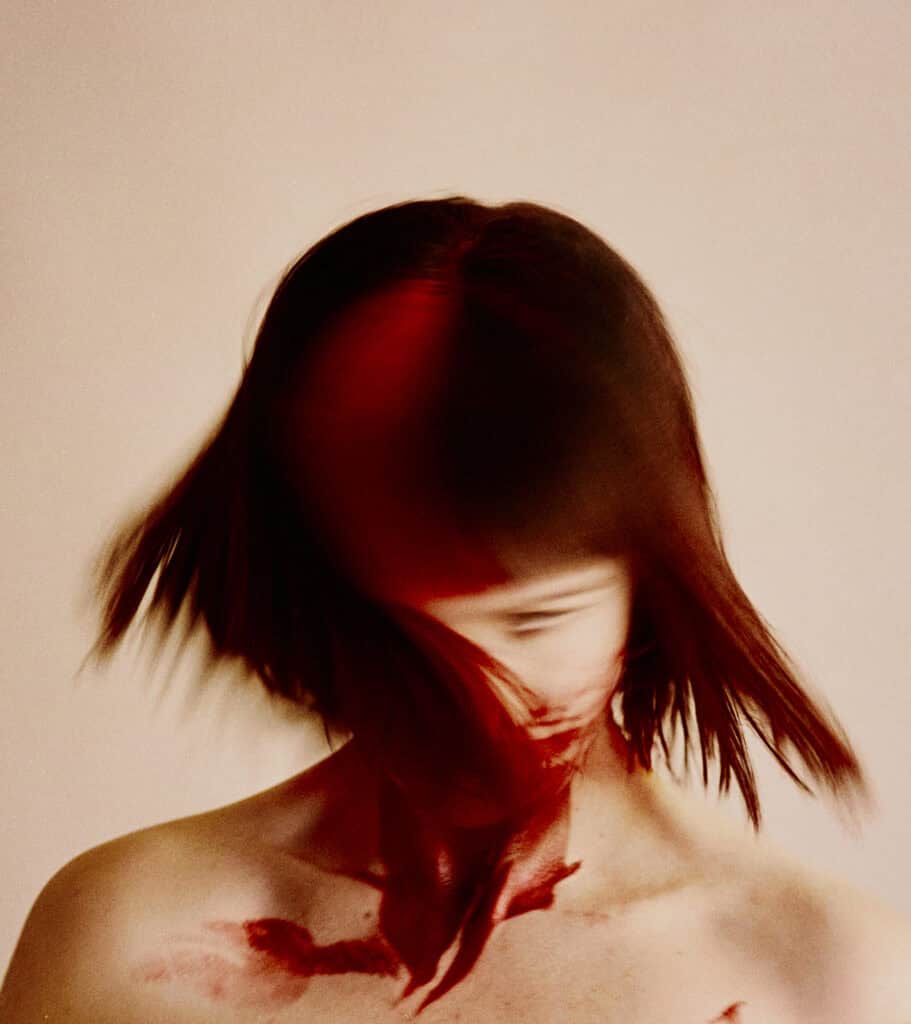
Photo credit: Fred Gervais
From lighting designers to costume designers – including Julie’s old friend Patti Gilstrap, who has taken time aside from “designing Marvel superhero costumes” to create light-up dresses for the tour in support of the new album – there is a net of creatives involved in the live show. For the band, the task is no simpler. “We would never go on stage and make a shortcut that’s easy for us but sacrifices the music. But there are choices you have to make. ‘I can’t sing these parts at the same time, so I’ll take the hardest one and these others have to be on backing tracks.’ We got away from that, the guys are singing a little bit more. Johannes of course is growling; Tom and Chris and John are all singing on this record. How will this record that we made separately and digitally, what choices do we have to make to make it to do it possible live? Experience really helps here because we’re all on the same page. It’s not about making it easy, it’s how do we stretch a sound here because the audience needs a second, or how do we put this sound here so the guys can tune to a different key. That’s the challenge of putting on the live show.”
John is quick to add that all the work results in a really rewarding experience for the musicians. “The cool thing is there comes a point where it’s like ‘okay, we did the work, we rehearsed, let’s get on stage and not only put on a great show but have fun and live in that moment and be present. And create energy that we’re all capable of creating… For me personally, getting on stage with Julie’s band, I get a lot of confidence from her performance. I’m very inspired by performing with her. When I’m on stage I’m definitely feeding off of her energy because I know she’s there to not shortcut the audience, she’s there to give it all and she does every time she performs.”
LaMacchia’s taking of inspiration from her live energy is something Julie laughs at, interjecting with “You shouldn’t!” For her, there’s an underlying motivation of not wanting to undersell to those paying to see her perform.
“For me, it’s terrifying before you get on. Getting onstage, you almost have to train for it. It takes so much, when you’re off stage you’re dripping in sweat. It’s another reason why the cover image was the right image. If you’re doing life the way you should be, in these moments you should be jumping all in and it should be with everything you have, everyone in the room deserves that. It’s almost out of respect for the audience, you never shortcut a live performance even if you come out of that with bruises or whatever. You do it how it should be done.”
The collective of creatives now get to enjoy the fruits of their labour, having navigated the excitement and challenge of creating a record together. It was a process that pulled out the best elements of the groups musicality and problem-solving skills. “I think personally one of the most challenging things was figuring out what was right for the record.” John says. “Everyone in the band is so talented, and I feel very fortunate to be able to work with everyone in this band. Everyone can bring something really amazing to the table, but what is it that’s going to be right with the rest of the music we’re working on? What’s going to be right for Julie’s voice? What’s inspiring?”
The result of this was tracks that were left on the cutting room floor, despite their merit. Though this required a lot of consideration, as Julie adds “We went all the way through, and asked ‘should this be here?’ It was a little tricky. What pieces of the puzzle fit?”
But through this challenge came moments of real excitement and creative unity. LaMacchia recalls the writing of ‘The Lighthouse’, which came right at the end of the process, as John admits. “It was at a point where we were like ‘Another song? Holy Crap!’ We just didn’t know we had another one in us.” The song’s creation proved how keyed into the process they were, as John details: “At that point we were so comfortable working the way we were working that everyone just fell into place and got into gear and was like ‘ok, we’ve got one more to do, let’s see what we can come up with.’ We all worked basically separately on this, and everyone sent Andrew ideas and he made this incredible mix, Julie came up with these incredible lyrics and this incredible song. To me, it was one of the shining moments, it was one of the most collaborative songs and everyone just came up so big for it, and in the final hour.”
Each drawing on their own experiences and influences, inspiration arose from all manner of places, including the bassline on ‘The Lighthouse’ drawing on Andrew Schneider’s infatuation with a performance by the dance company Batsheva, as Julie explains. “There’s one performance, there’s a woman on a treadmill going highspeed for the entire show. It’s over a marathon, but she’s running at the same speed through the entire thing. That impacted him and that’s why his bassline is the same all the way through the song. Which is actually kinda hard to do.”
Ridiculous and Covered in Blood – heralded by the single ‘Supernatural’, of which Christmas recalls “when I first heard it… it was in my head for fucking days.” – sees Christmas wrap her union with a rag-tag group of tenured musicians under the banner of her own name, her first ‘solo’ album in 14 years. But as she herself puts it, that banner is just a titling convention, not indicative of her domineering of the band. As she herself puts it, “I would be the binding of the book and they’re the pages.” In that regard, the album is another in a series of documentation of her inherent collaborative spirit.
Ridiculous and Full of Blood is out June 14th via RED CRK. You pre-order the album and find Julie Christmas’ upcoming live dates HERE
Words: Levi Mulholland | Interview: Dom Smith

